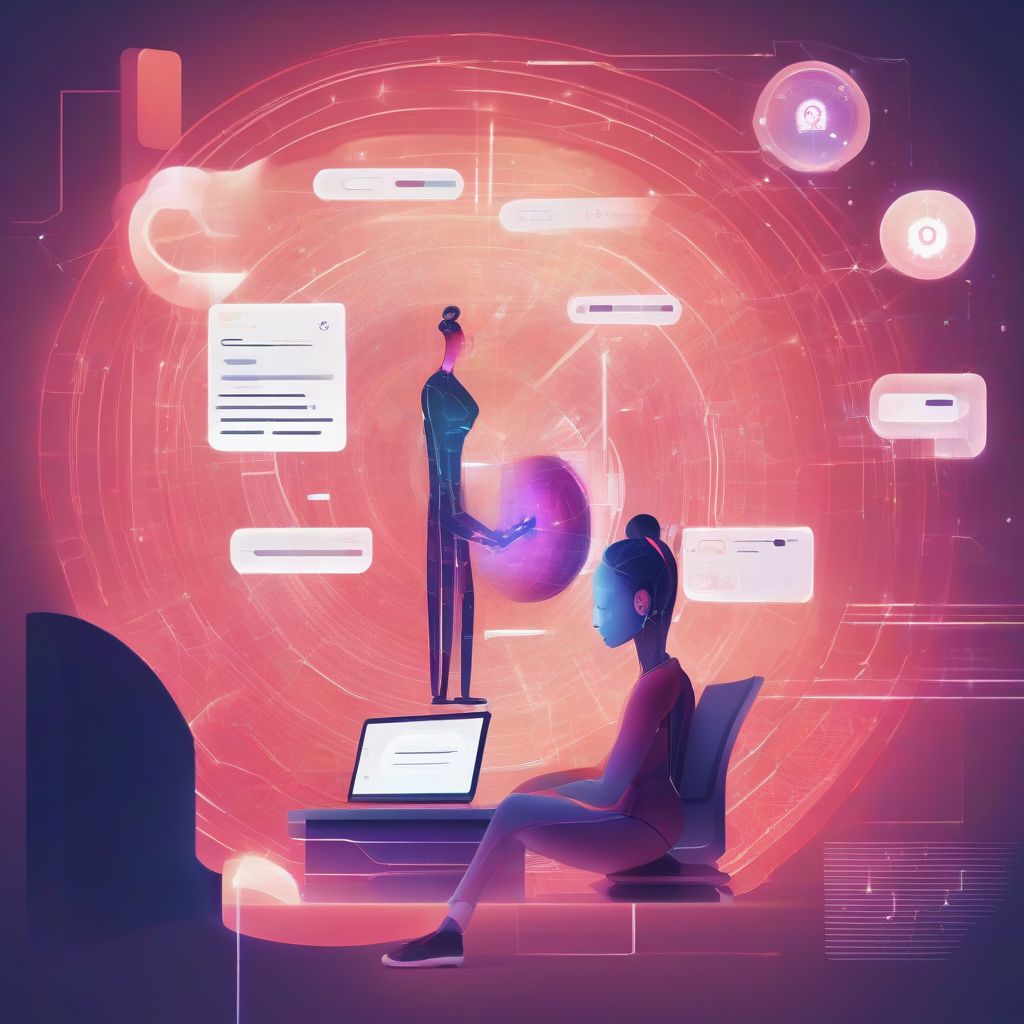Imagine a digital world where websites and apps intuitively understand your needs, predict your actions, and deliver personalized experiences tailored to your unique preferences. This isn’t science fiction, it’s the exciting future of UX design, powered by the transformative capabilities of Artificial Intelligence (AI) and Machine Learning (ML).
Understanding the Dynamic Duo: AI and ML in UX Design
Before we delve into the future, let’s break down what AI and ML bring to the UX design table.
- Artificial Intelligence (AI): At its core, AI enables machines to mimic human intelligence, enabling them to learn from experiences, adapt to new information, and perform human-like tasks.
- Machine Learning (ML): A subset of AI, ML empowers systems to learn and improve from data without explicit programming. By analyzing vast datasets, ML algorithms can identify patterns, make predictions, and refine their performance over time.
In the realm of UX, this translates to a powerful synergy:
- AI analyzes user behavior data (clicks, navigation patterns, time spent on pages) to understand user needs and pain points.
- ML uses this data to personalize user interfaces, recommend content, and even predict user actions before they happen.
The Transformative Impact: How AI and ML are Reshaping UX
The integration of AI and ML is already revolutionizing UX design in profound ways:
1. Hyper-Personalization: Tailoring Experiences to the Individual
Gone are the days of one-size-fits-all designs. AI and ML enable:
- Personalized content recommendations: Think Netflix suggesting shows based on your watch history, or Amazon curating product suggestions based on past purchases.
- Dynamic content adjustment: Websites that adapt language, currency, and content format based on your location and browsing habits.
- Individualized user interfaces: Imagine apps that rearrange their layout based on your usage patterns, placing frequently used features within easy reach.
2. Streamlined User Flows: Effortless and Intuitive Interactions
AI and ML are making user journeys smoother than ever:
- Predictive search: Search bars that anticipate your needs, offering relevant suggestions before you finish typing, saving you time and effort.
- Chatbots and virtual assistants: AI-powered chatbots provide instant customer support, answer queries, and guide users through complex processes, enhancing user satisfaction.
- Automated tasks: Imagine AI handling repetitive tasks like form filling or data entry, freeing up users to focus on more engaging interactions.
3. Data-Driven Design Decisions: Creating User-Centric Experiences
AI and ML provide invaluable insights into user behavior, empowering designers to:
- Identify and address usability issues: By analyzing user interactions, AI can pinpoint areas of friction or confusion in a design, allowing for targeted improvements.
- A/B testing and optimization: ML algorithms can rapidly test different design variations, identifying the most effective layouts, color schemes, and content placements.
- Data-backed design decisions: No more relying on guesswork. AI and ML provide concrete data to support design choices, leading to more effective and user-centric experiences.
 AI-Powered UX Design
AI-Powered UX Design
Looking Ahead: The Future Landscape of AI and ML in UX
The journey has just begun. Here are some exciting possibilities on the horizon:
- Voice and Gesture Interfaces: As voice assistants and gesture recognition technology mature, expect to see more seamless and natural ways to interact with digital products.
- Emotionally Intelligent Design: AI is getting better at recognizing and responding to human emotions. Imagine websites that adapt their tone and content based on your mood, creating more empathetic and engaging experiences.
- The Rise of the Metaverse: AI and ML will be crucial in designing immersive and personalized experiences in virtual and augmented reality environments.
[amazon bestseller=”ux design with ai”]
Conclusion: Embracing the AI-Powered Future of UX
The integration of AI and ML into UX design isn’t about replacing human designers. It’s about augmenting their capabilities, providing them with powerful tools and insights to create truly exceptional user experiences. As AI and ML technologies continue to evolve, we can expect to see even more innovative and user-centric design solutions, shaping a future where technology seamlessly adapts to our needs and enhances our digital interactions. The future of UX is intelligent, personalized, and incredibly exciting.
